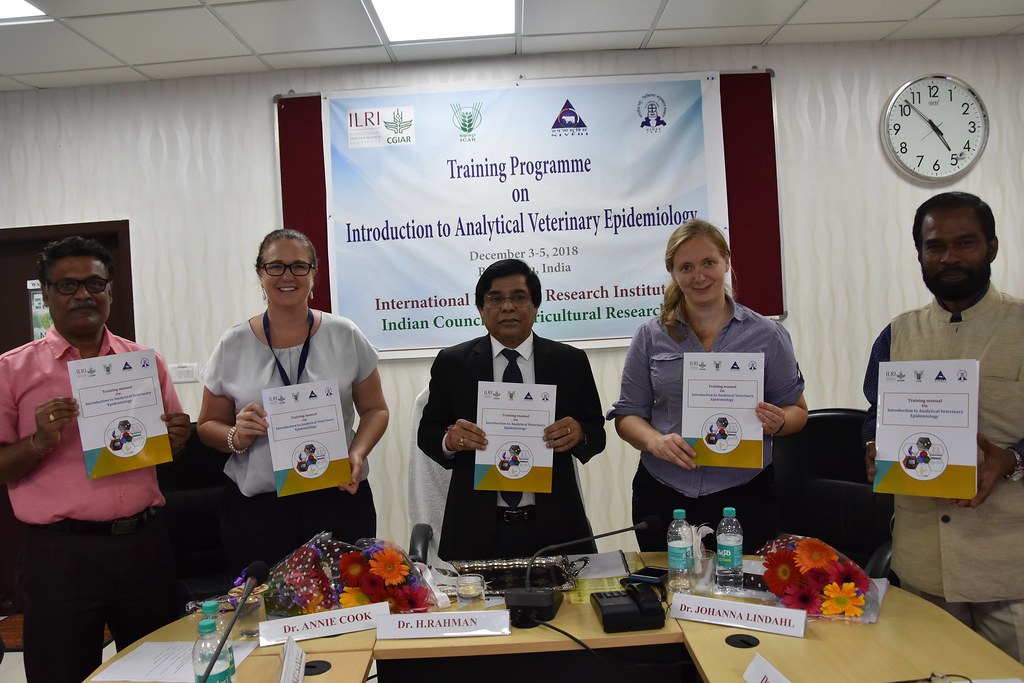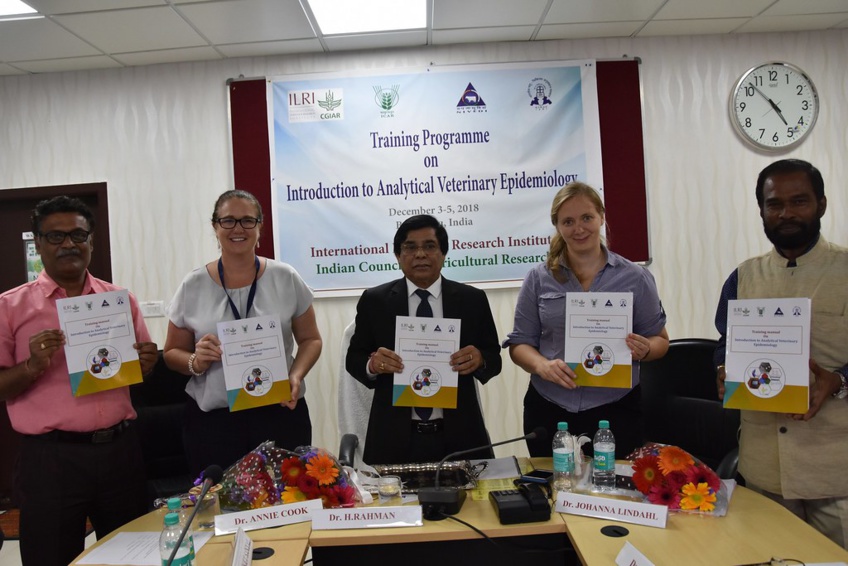My journey towards becoming an epidemiologist began during my college years when I volunteered as an interpreter for Spanish-speaking patients at a free medical clinic. This experience allowed me to observe and participate in the patients’ interactions with the healthcare system, providing me with invaluable insights. I was fascinated by how these observations could reveal patterns that could be used to enhance human health. It was then that I realized that my future lay in epidemiology.
At the clinic, patients often appeared anxious and uneasy, possibly going through one of their most challenging days. Communicating in a patient’s native language brought a sense of familiarity to an otherwise unfamiliar environment. It dawned on me that patient care extended beyond just medicine; it involved effective communication, ensuring everyone involved spoke the same language. Similarly, in epidemiology, readers can better comprehend studies when we communicate in the “language” of epidemiology.
In the blink of an eye, “epidemiologist” has become a common term due to the COVID-19 pandemic. With more people reading epidemiological and other scientific articles than ever before, it’s crucial to be a discerning reader. How often have you read only the abstract or conclusion of an article, or even just the title? I confess I’ve done this too. The pandemic has taught us that science’s value diminishes if it’s not communicated effectively.
All scientific studies have their flaws, and epidemiological studies are no exception. If a study could perfectly replicate reality, we wouldn’t need to conduct it in the first place because we’d already know the answer to our question. It’s normal for a study to have limitations, and that’s okay. What matters is that we critically evaluate these limitations and consider how they might affect our understanding and application of the results.
Epidemiological studies are intricate in their design, execution, and interpretation. It’s akin to baking a cake where ingredients need to be mixed in a specific order and baked at the right temperature for a set duration for the cake to turn out well.
Just as altering one step in a recipe can drastically change the end product, epidemiologists make numerous decisions when designing and conducting a study. They decide on things like 1) what data they need to collect to determine if an exposure leads to a disease and how they will collect them, 2) what is being compared when looking for “increased risk”, and 3) how much uncertainty exists in reporting “statistically significant” results. Each of these decisions helps us figure out how to appropriately apply what we learned from the study. By asking questions about these three things, you can better understand the results of any epidemiological study.
It’s important for us as epidemiology users to invest the time required to read, understand, and inquire. Asking questions about how variables are defined and measured, what is being compared, and the certainty of results is a good place to start. I hope that this article has helped you to understand the ingredients of an epidemiology study, and to speak the language of epidemiology.
Keep in mind that results from epidemiology studies add to a body of evidence; they are not necessarily intended to provide a definitive answer to a research question. Their findings should be used in concert with findings from other epidemiologic and non-epidemiologic studies. With this approach we can pave the way for a more active public engagement in the literature we consume.
Let’s delve into an example to understand this better:
You might have come across news articles claiming that coffee consumption can increase your lifespan. These claims are often based on epidemiological studies. One such study conducted by Loftfield et al. in 2018 examined the relationship between coffee consumption and mortality in a UK population. As a daily coffee drinker, I was intrigued by this news and wanted to understand if the study’s findings were applicable to me.
Epidemiologists gather data to describe a population. They categorize individuals based on whether they have the disease and/or exposure, and then compare these groups to identify any differences. In the Loftfield study, data was collected to describe coffee consumption behavior (the exposure). Data on mortality was then collected and compared among different exposure groups.
Sometimes, direct measurement of an exposure or a disease is not possible, so epidemiologists might use an indirect measurement. In the Loftfield study, participants were asked about their coffee consumption. While indirect measurements are often necessary in epidemiological studies, it’s important for readers to understand that these data represent an estimate, not an exact measurement.
What does “increased risk” mean? Epidemiological studies often refer to increased or decreased risk, odds, or hazard. But these statements are meaningless unless you know what they’re being compared to. In the coffee study, people who drank coffee were compared to those who didn’t drink any coffee at all. However, the authors could have defined this group differently.
What does “statistically significant” mean? In epidemiological studies, results are often described as either “statistically significant” or “not statistically significant.” Statistical significance indicates our confidence that a study’s results didn’t occur by random chance. It is often represented by a p-value or a confidence interval, like in the coffee study.
Whether a result is considered “significant” depends on a threshold chosen by the investigator. Most epidemiologists choose a standard value, but they can choose a different one if they wish. For example, an epidemiologist might choose a different threshold if a study is exploratory and a greater level of uncertainty is acceptable.
When an epidemiologist describes a result as “statistically significant,” it means that there is a low probability that the results were due to chance, but what is considered “low” is defined by the epidemiologist. Loftfield et al., reported reduced mortality among participants who drank 2-3 cups of coffee per day compared to those who drank none. As someone who drinks three cups of coffee per day, I find these results encouraging.
At the clinic, patients often appeared anxious and uneasy, possibly going through one of their most challenging days. Communicating in a patient’s native language brought a sense of familiarity to an otherwise unfamiliar environment. It dawned on me that patient care extended beyond just medicine; it involved effective communication, ensuring everyone involved spoke the same language. Similarly, in epidemiology, readers can better comprehend studies when we communicate in the “language” of epidemiology.
In the blink of an eye, “epidemiologist” has become a common term due to the COVID-19 pandemic. With more people reading epidemiological and other scientific articles than ever before, it’s crucial to be a discerning reader. How often have you read only the abstract or conclusion of an article, or even just the title? I confess I’ve done this too. The pandemic has taught us that science’s value diminishes if it’s not communicated effectively.
All scientific studies have their flaws, and epidemiological studies are no exception. If a study could perfectly replicate reality, we wouldn’t need to conduct it in the first place because we’d already know the answer to our question. It’s normal for a study to have limitations, and that’s okay. What matters is that we critically evaluate these limitations and consider how they might affect our understanding and application of the results.
Epidemiological studies are intricate in their design, execution, and interpretation. It’s akin to baking a cake where ingredients need to be mixed in a specific order and baked at the right temperature for a set duration for the cake to turn out well.
Just as altering one step in a recipe can drastically change the end product, epidemiologists make numerous decisions when designing and conducting a study. They decide on things like 1) what data they need to collect to determine if an exposure leads to a disease and how they will collect them, 2) what is being compared when looking for “increased risk”, and 3) how much uncertainty exists in reporting “statistically significant” results. Each of these decisions helps us figure out how to appropriately apply what we learned from the study. By asking questions about these three things, you can better understand the results of any epidemiological study.
It’s important for us as epidemiology users to invest the time required to read, understand, and inquire. Asking questions about how variables are defined and measured, what is being compared, and the certainty of results is a good place to start. I hope that this article has helped you to understand the ingredients of an epidemiology study, and to speak the language of epidemiology.
Keep in mind that results from epidemiology studies add to a body of evidence; they are not necessarily intended to provide a definitive answer to a research question. Their findings should be used in concert with findings from other epidemiologic and non-epidemiologic studies. With this approach we can pave the way for a more active public engagement in the literature we consume.
Let’s delve into an example to understand this better:
You might have come across news articles claiming that coffee consumption can increase your lifespan. These claims are often based on epidemiological studies. One such study conducted by Loftfield et al. in 2018 examined the relationship between coffee consumption and mortality in a UK population. As a daily coffee drinker, I was intrigued by this news and wanted to understand if the study’s findings were applicable to me.
Epidemiologists gather data to describe a population. They categorize individuals based on whether they have the disease and/or exposure, and then compare these groups to identify any differences. In the Loftfield study, data was collected to describe coffee consumption behavior (the exposure). Data on mortality was then collected and compared among different exposure groups.
Sometimes, direct measurement of an exposure or a disease is not possible, so epidemiologists might use an indirect measurement. In the Loftfield study, participants were asked about their coffee consumption. While indirect measurements are often necessary in epidemiological studies, it’s important for readers to understand that these data represent an estimate, not an exact measurement.
What does “increased risk” mean? Epidemiological studies often refer to increased or decreased risk, odds, or hazard. But these statements are meaningless unless you know what they’re being compared to. In the coffee study, people who drank coffee were compared to those who didn’t drink any coffee at all. However, the authors could have defined this group differently.
What does “statistically significant” mean? In epidemiological studies, results are often described as either “statistically significant” or “not statistically significant.” Statistical significance indicates our confidence that a study’s results didn’t occur by random chance. It is often represented by a p-value or a confidence interval, like in the coffee study.
Whether a result is considered “significant” depends on a threshold chosen by the investigator. Most epidemiologists choose a standard value, but they can choose a different one if they wish. For example, an epidemiologist might choose a different threshold if a study is exploratory and a greater level of uncertainty is acceptable.
When an epidemiologist describes a result as “statistically significant,” it means that there is a low probability that the results were due to chance, but what is considered “low” is defined by the epidemiologist. Loftfield et al., reported reduced mortality among participants who drank 2-3 cups of coffee per day compared to those who drank none. As someone who drinks three cups of coffee per day, I find these results encouraging.


 Understanding Epidemiology: Insights from Coffee Consumption and Mortality Study
Understanding Epidemiology: Insights from Coffee Consumption and Mortality Study





 Companies
Companies